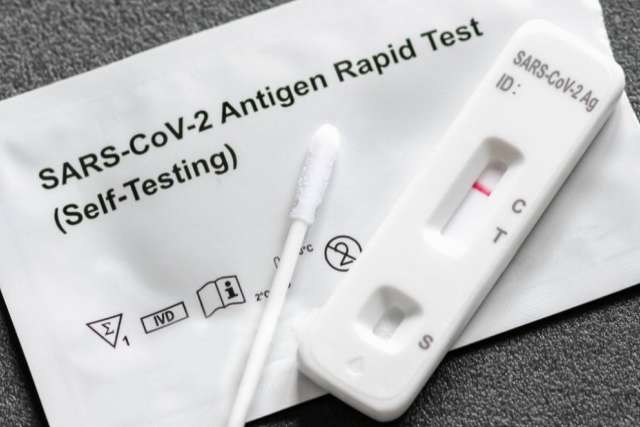As COVID-19 surges, a rush at testing centers and a shortage of home testing kits means that not everyone experiencing symptoms can be checked right away.
The prevalence of the omicron variant also changes the way the virus presents in vaccinated individuals – and appears to affect when home tests are most effective at detecting the disease, says Omai Garner, PhD, director of clinical microbiology for UCLA Health.
“Omicron and the vaccines have changed things,” Dr. Garner says.
How omicron symptoms progress
The now-dominant omicron variant presents differently in vaccinated and boosted individuals than previous variants, Dr. Garner says, which affects the need for, and timing of, testing.
Fever used to be a major indicator of a potential COVID infection, Dr. Garner says, but that’s not the case with omicron in people who’ve been vaccinated. Instead of fever, an omicron infection in vaccinated individuals is likely to manifest as cold-like symptoms, such as congestion and runny nose.
“Because you basically have a person who is immune to serious disease and partially immune to getting symptoms,” Dr. Garner says, “you have a variant that appears to behave more like a cold virus in the vaccinated population.”
The confusion around COVID or cold, Dr. Garner says, is “why our numbers are going up so high.” People who think they have a simple cold are not taking the necessary precautions to avoid spreading the disease.
So, if you’re vaccinated and experiencing what seem like ordinary cold symptoms, it could actually be COVID. This makes testing all the more important, but the next challenge might be finding a test.
PCR vs. rapid antigen test
There are two types of COVID-19 tests.
Antigen tests are the rapid tests available for at-home use. These look for a protein component of the virus.
Polymerase chain reaction (PCR) tests identify genetic material from the virus, and must be performed in a lab.
“The PCR test is exquisitely sensitive, meaning it can get down to finding the lowest amount of virus that’s there,” Dr. Garner says.

A PCR test can detect remnants of the virus long after symptoms have resolved and the contagious period has passed, he adds. Antigen tests, on the other hand, are only effective when an adequate amount of virus is present.
Omicron seems to affect when viral levels are high enough to show up on an antigen test in vaccinated people, Dr. Garner says.
“It does not appear the antigen tests are working well in the vaccinated population with omicron on day one or day two (of symptoms),” he says.
Researchers suspect that initial viral loads are suppressed in vaccinated people infected with omicron, so antigen tests can’t detect the virus until a few days into infection.
“Day three, day four, day five, they work much better.”
With other variants and without vaccination, peak viral load is typically found the day before symptoms surface, Dr. Garner says, and this is probably still true for unvaccinated individuals with omicron.
“If you’re unvaccinated, you’re more likely to have a fever as your first symptom,” he notes, “and you’re more likely to have the rapid antigen test be positive at that time.”
Dr. Garner expects at-home antigen tests to evolve as variants arise.
Assume it’s COVID
With mild cold symptoms, many people feel well enough to go to work or run errands. But if those symptoms are being caused by COVID-19, going out could lead to unwittingly spreading the virus.
It takes a test to know for sure. But what if you can’t get one? And even if you can, they can be pricy at around $25 for a box of two. There’s also an expiration date.
“You have to err on the side of isolation,” Dr. Garner says. “Because we know with this virus, you can feel pretty healthy and be very contagious.”
Previous guidance was to isolate for 10 days after the start of symptoms, whether or not you got tested, Dr. Garner reminds us.
“This has been the recommendation we have been using to be safe throughout the course of this whole pandemic,” he says.
The U.S. Centers for Disease Control and Prevention recently said people are clear to emerge from isolation five days after COVID-19 infection, as long as they wear a mask around others for another five days.
“You isolate for 10 days and then you’re fine,” Dr. Garner says.
He envisions a future where antigen tests are kept in every medicine cabinet, like rubbing alcohol or hydrogen peroxide.
Get the latest information on COVID-19
Order free COVID-19 test kits, which are now available by mail, four per household.



